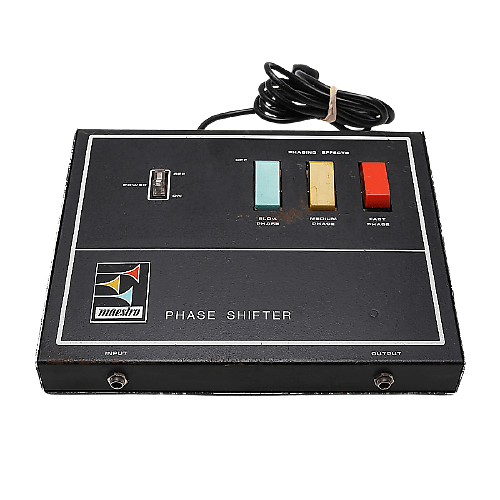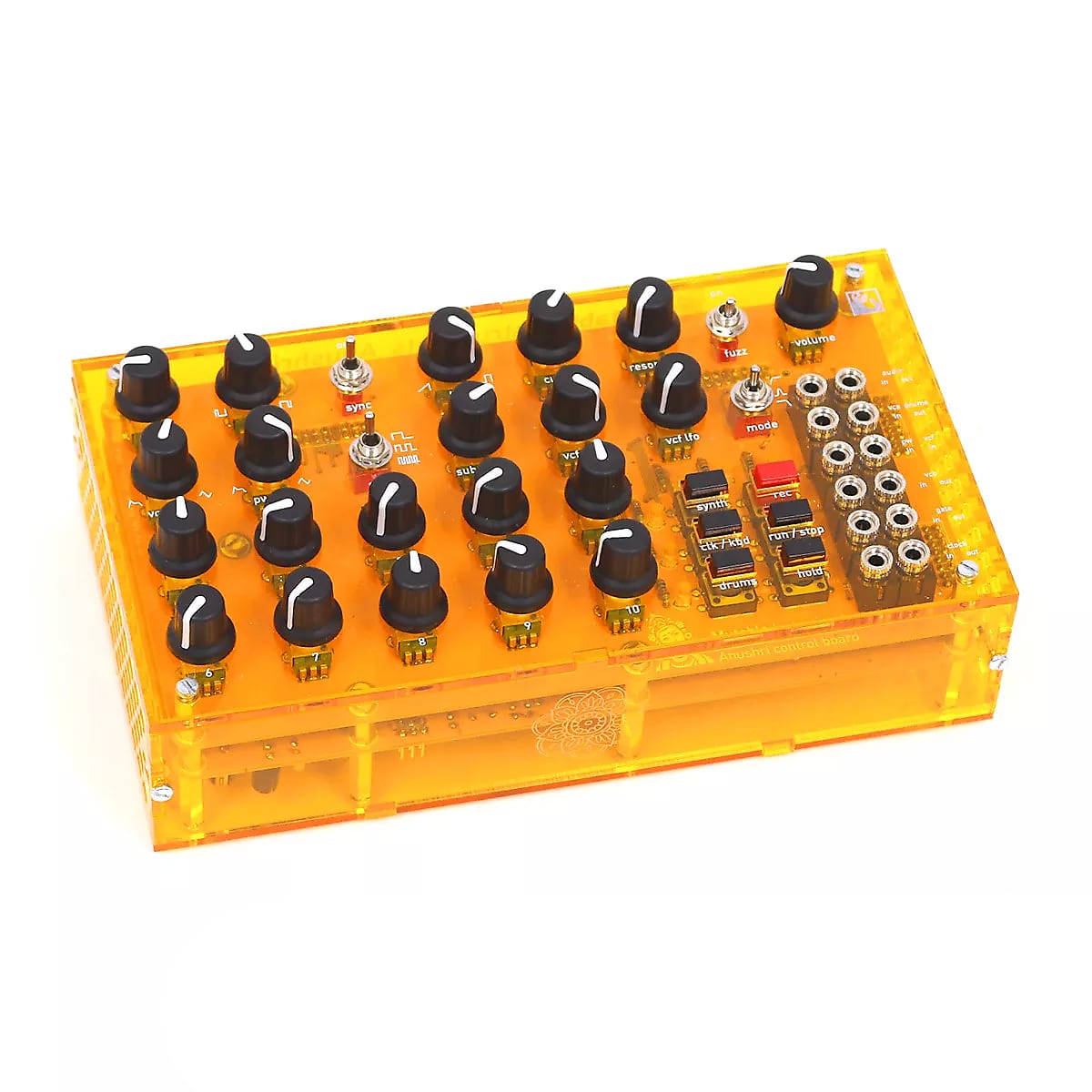Everybody has to start somewhere—that includes famous synthesizer designers. Whether they’re making pedals, burning solder for another company, or trying their hand at small devices before hitting on the one that will catapult them into synthesizer stardom, many of them got their start in surprisingly humble ways.
Let’s cast our attention back to the days before these seven engineers were synth-famous and look at where they got their start.
Tom Oberheim
Before Tom Oberheim started designing some of the best synthesizers ever made, he attended UCLA. Although a physics student, he was often in the music department where he befriended a number of LA-based musicians, including members of avant-pop band The United States Of America. Post-graduation, one of them asked him to build them a ring modulator. After finding a circuit diagram written by Harald Bode in an old issue of Electronics Magazine, he handed over the ring mod and soon found himself making them for all sorts of people, including Herbie Hancock and Jan Hammer.

Tom was soon contacted by the pedal company Maestro, who were interested in his ring mod and later rebadged it as the Maestro RM-1A . Tom continued developing pedals for Maestro, including the PS-1 phase shifter—a massive hit for the pedal company—and the Universal Synthesizer.
It would be a few more years before Tom would design his first real synthesizer, the Synthesizer Expander Module—or SEM—in 1974. Before that, he would become ARP’s Los Angeles dealer. He developed a mod to enable the 2600 to play duophonically, as well as his own digital sequencer, the DS-2. It was the DS-2 that would inspire the SEM as a solution to allow live performance over a sequenced line.
Fumio Mieda
Fumio Mieda’s name may not be as well known as that of Dave Smith or Tom Oberheim, but he’s arguably just as important in the development of the synthesizer. However, as an employee of Korg rather than a company owner himself, his work has largely gone unsung. This is unfortunate, as his contributions include Korg’s miniKorg 700 and 700S, MS-20, PS-3100, Mono/Poly, Poly-800, and many more.

Like Tom Oberheim, Mieda-san also cut his teeth designing guitar effects pedals. Working for Japanese pedal manufacturer Shin-Ei in the late 1960s, Mieda-san developed the Psychedelic Machine, a pedal that was to birth one of the most famous effects of all time. The Psychedelic Machine had two effects circuits, Fuzz and Mood Adjuster. The fuzz section was released as its own pedal, the Univox Super Fuzz (Shin-Ei had a distribution deal with Univox at the time) and the Mood Adjuster section would become the Vibra Chorus (or the Resly Tone as it was sometimes known).
Reportedly intended to sound like Russian radio waves intermodulating, the doppler-like chorus effect proved to be extremely popular with guitarists in the late 1960s, including Jimi Hendrix, who used it at Woodstock. Today, we’re all more familiar with the effect under the name it acquired upon its re-release: Uni-Vibe.
Bob Moog
Widely and justifiably known as the father of the analog synthesizer, Bob Moog actually got his start making theremins. A full 11 years before the first Moog Modular went on sale in 1964, a teenage Bob started R.A. Moog Co. to sell theremins, an instrument that he would return to again and again over the years.

The theremin, the world’s first electronic instrument, was famously invented by Leon Theremin in the Soviet Union in 1920. In the United States, RCA manufactured theremins based on the inventor’s patent as early as 1929—it was not successful, though, only selling around 500 units.
Fast forward to the 1950s, when the instrument was finding renewed interest thanks to its use in science fiction movie soundtracks. Enter Bob Moog, who started assembling and selling them out of his apartment in New York. Over the years, he would improve on his designs, adding additional tone controls, changing to transistors, and swapping out control antennas for metal plates.
By the mid-‘60s, he was fully invested in his modular synthesizer, but he still found time to tinker with theremins. Moog would contract with Gibson to design the Maestro TH-1 theremin. After losing control of Moog, leaving the company, and starting Big Briar, he returned to his first love, releasing the 91, 91B, and 91C series of theremins starting in 1991. He would continue selling theremins alongside synthesizers and effects until his passing in 2002, at which point Moog would honor his legacy by periodically releasing new models.
Erik Norlander
Erik Norlander is an unusual figure in the world of synth design. While many who work at musical instrument manufacturers are self-declared “failed musicians,” Erik is actually a successful one. As a progressive rock keyboardist, he’s played with Asia among many other bands—but for synthesizer heads, he’s probably best known for his work on the UNO synths for IK Multimedia, as well as the former Synthesizer Product Manager for Alesis, where he spearheaded the Andromeda.

It was session work that led to him contributing Rhodes, Hammond and other samples to Alesis for its QuadraSynth in 1993. The synth wasn’t received very well but Alesis wanted to give it another shot, so the company asked Erik to come on board and help re-voice it. “That led to my first actual product, the QuadraSynth Plus,” he told Synthtopia, “which was a major revamp of the instrument.”
While at Alesis, he also worked on the QS6 and QS8, NanoPiano and other modules, like the DM5 and DM Pro drum products. However, he called Andromeda “the crowning achievement of my time with that company,” in an interview with MusicTech. To think it all started with a few Rhodes samples!
Dave Smith
The late Dave Smith is a legend in the world of synthesizers. After first making his name with the Sequential Circuits Prophet-5 in 1978, he followed it up with another four decades of incredible instruments. However, Dave started Sequential Circuits in 1974. What was he up to during those first four years? Cranking out sequencers.

Much like his friend Tom Oberheim, Dave Smith launched his company with a sequencer. Originally built to control his Moog Minimoog Model D, Dave made a handful of Model 600 16-step analog sequencers, selling them to music labs, according to the Sequential website. Upping his game, he next developed a digital sequencer. The Model 800 from 1975 could store 16 banks of 16-step sequencer and sported both real-time and step input.
In 1976, he moved away from sequencers, instead developing a programmer for the memoryless Minimoog and ARP 2600. With eight banks of eight programs, it could hold a total of 64 sounds. Programmable sound was to be a big selling point for the Prophet-5, which debuted two years later.
Not content to abandon the sequencer, he later released the Poly Sequencer Model 1005, a polyphonic sequencer for the Prophet-5.
Émilie Gillet
In the last decade, Eurorack has exploded in popularity. Thanks to a general spirit of experimentation and a desire to find new ways to advance synthesis, the influence of Eurorack has been felt beyond the boundaries of the skiff, with traditional synthesizers adopting many of its developments. One Eurorack manufacturer that’s had an outsized effect on synthesizers of all kinds is Mutable Instruments.

Mutable Instruments’ founder Émilie Gillet got her start in signal processing and machine learning with companies like Google and Last.fm. When she made the jump to synths and started Mutable, it was originally to create desktop synthesizers and DIY kits. Her first synth, the hybrid monosynth Shruthi-1, was a hit, as were the follow-ups, Ambika and Anushri.
After experimenting with Eurorack modules on a personal basis, she determined that there was less overhead making modules than full-size synthesizers, and the version of Mutable Instruments that we know and love began in earnest.
Although the company closed shop in 2022, all of MI’s code remains open source. As a result, many of Émilie’s ideas live on in other modules and even traditional synthesizers like Arturia’s MiniFreak and MicroFreak.
